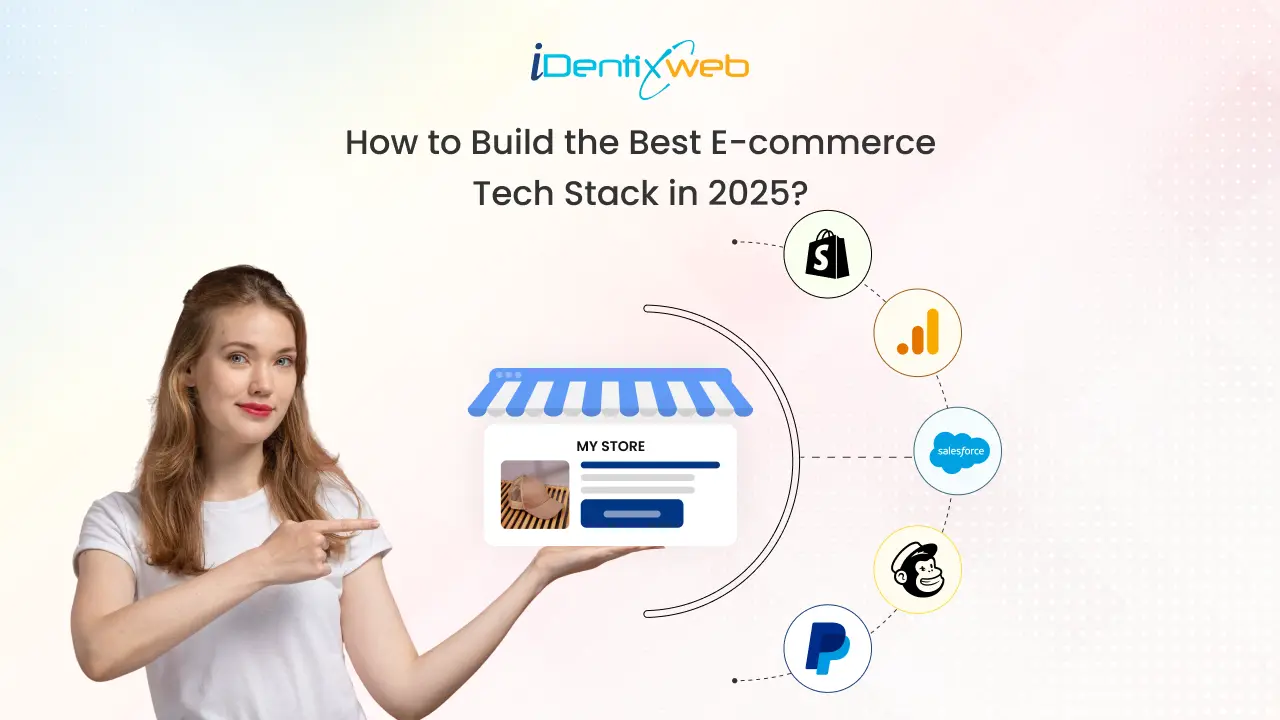
Imagine being a chef. You create a great dining experience with the right tools and ingredients. It's a win-win for you and your diners. Building an ecommerce tech stack is the same.
It’s all about finding the right technologies for a fantastic experience for you and the shopper.
With the tech world advancing rapidly, you have countless tools to add to your ecommerce technology stack to be more adaptive and get ahead of your competitors.
But with the countless technologies comes confusion on which is best for an ecommerce business?
If you want to decide which tech stack to use in 2025, you’re in the right place.
In this article, we’ll give you a detailed overview of the technology stack in ecommerce, why you need one and how to build the best tech stack for ecommerce.
What is an Ecommerce Tech Stack?
An ecommerce tech stack comprises integrated software solutions that help run every aspect of your online store. From managing payments and inventory to automating marketing campaigns, your tech stack ensures seamless operations from front to back.
As your business grows, your tech stack must grow too to handle increased traffic, orders, and customer engagement.
No matter what products you sell or which platforms you use, every ecommerce tech stack must work seamlessly. For example, if you choose Shopify as your platform, it will seamlessly integrate with the marketing automation tool or CRM tool of your choice.
Two Aspects of Your Ecommerce Tech Stack
There are two main parts of your tech stack
1. Front end (customer-facing)
2. Back end (server side)
The front-end focuses on creating a smooth user experience (UX) through engaging, interactive design and seamless navigation.
Web development technologies used in front-end include:
React.js: A popular JavaScript library for building dynamic, interactive UIs.
Angular: A robust framework for building complex, scalable web applications.
The back-end ensures the efficient handling of critical business operations like inventory management, order processing, and customer data, ensuring everything works behind the scenes.
Server-side technologies used in the back-end include:
Node.js: A JavaScript runtime for building scalable back-end systems.
PHP: Used by ecommerce platforms. It’s a common language for server-side scripting.
Top 4 Factors to Consider When Choosing Your Ecommerce Technology Stack
Choosing the right technology stack can make or break your ecommerce business. Here are four factors to keep in mind while selecting your tech stack.
Factor 1: Pricing
Depending on the size of your online store and the complexity of your business operations, consider choosing the tech stack that fits your budget.
Here’s how you can decide to evaluate your costs.
- Platform cost: Subscription fees or a one-time payment.
- Fees per transaction: Can be charged by both the platform and payment gateways.
- Additional costs: Plugins, integrations, and custom themes to enhance the store’s functionality.
- Development costs: These are for ongoing expenses, particularly if using an open-source platform.
Factor 2: Customer Support
When building your ecommerce store, choose tools and providers that offer comprehensive support.
Consider these areas when evaluating support.
- Access to expert help via live chat, phone, or email.
- Providers offering quick bug fixes and updates.
- Solutions that allow for custom development based on your business needs.
- Ensure the tech supports scalability to handle future growth.
Factor 3: Evaluate Complexity
Balancing ease of use with functionality is crucial when selecting a tech stack. A complex tech stack might offer advanced features, but it can also increase maintenance costs and require more resources.
On the other hand, a managed platform simplifies the process and offers tools and support, but may lack the customization you need. To navigate these trade-offs effectively, adopting Agile development methodologies enables your team to iterate rapidly and adjust solutions based on evolving requirements without sacrificing usability or functionality.
Find a solution that matches your team’s technical skills while offering the features your business needs.
Integration
Choose platforms that offer strong integration support. Your ecommerce platform must work seamlessly with other tools such as payment gateways, CRM software, inventory management, and marketing tools.
A 2025 tech stack should include integration with AI & automation to ensure data flows smoothly across platforms, reducing manual work and errors.
Must Have Business Functions to Build Your Ecommerce Tech Stack
Here’s a list of business functions and the top technologies/tools for each.
Ecommerce platform
Every ecommerce business needs a powerful content management system (CMS). Easy-to-use platforms like Shopify or BigCommerce allow you to add and edit content (Product descriptions, images, blog posts) without any coding.
You can also choose a headless CMS that separates where the content is stored from where it is displayed. For example, Shopify’s headless tech stack uses React.js.
Top tools
- Shopify
- WooCommerce
- BigCommerce
Reporting & analytics
Real time analytics helps you track sales & revenue, store traffic, customer behaviour & engagement, and marketing performance. Access to this data allows you to make informed decisions.
For example, performance data about your marketing campaign can help you decide how to manage items in inventory.
Top technologies/tools
- Shopify Analytics
- Google Analytics
- Adobe Analytics
CRM tool
Building strong customer relationships is excellent for your brand. A powerful CRM tool helps manage customer data, drives personalized marketing campaigns, and enhances customer retention. For anyone looking to get into tech, learning how CRM systems work is a great way to understand how technology drives modern ecommerce success.
This helps you deliver personalized support at every customer journey stage.
Top tools
- Salesforce
- Hubspot
- Zoho CRM
Inventory and order fulfillment
Managing inventory and order fulfilment is crucial. Real-time inventory management helps you track inventory levels and identify slow-moving items. This keeps you prepared for what’s next.
Order fulfilment helps you keep the buying process seamless, from checkout to shipment.
Top tools
- Unicommerce
- Zoho Inventory
- TradeGecko
- Inciflo
Marketing
Your ecommerce tech stack should include tools that enable targeted campaigns, customer segmentation, and performance tracking.
You can automate email campaigns, optimize ads and use data analytics to measure the effectiveness of your efforts.
Top tools
- Mailchimp (Email marketing)
- Google Ads: (Paid advertising)
- Hootsuite: (Social media marketing)
- SEMrush: (Content marketing)
Payment gateways
A good payment gateway helps customers pay easily and securely. It’s good to offers various payment methods, such as credit/debit cards or digital wallets for ease of payment.
Top tools
- PayPal
- Stripe
- Adyen
- Square
Example of an Ecommerce Tech Stack Diagram
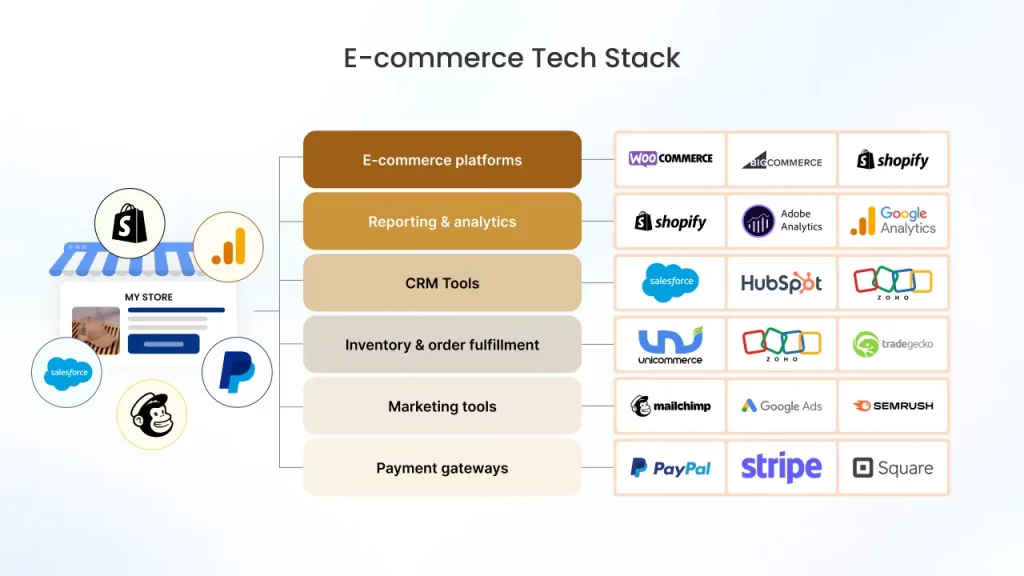
Bottom Line: How to Select the Best Technology Stack for Ecommerce?
Start with a Managed Ecommerce Platform
Managed ecommerce platforms like Shopify or BigCommerce are great starting points. These platforms have built-in features to help you scale without wasting time and effort.
Choose a modular architecture
Modular architecture gives you flexibility to add or remove tools as your business scales. For instance, if you want to add a new payment system or switch your marketing tool without disrupting operations.
Don’t over-isolate components
While payment gateways or inventory systems need to work separately, too much isolation can lead to issues.
Instead, choose a platform that integrates well, so that all technologies can work together seamlessly.
Start building your ecommerce tech stack today, choosing tools that fit your business size, goals, and growth trajectory. With the right tech stack, you’ll be well-equipped to thrive in 2025 and beyond.
FAQs
1. What is an ecommerce tech stack?
An ecommerce tech stack is a collection of technologies that help you run your online store.
2. What are the technologies used in ecommerce?
Shopify (CMS), PayPal (Payment gateway), MailChimp (Marketing), Zoho inventory (Inventory management), Hubspot (CRM), Google Analytics (Analytics), React.js (Customizable front-end), Node.js (Customizable back-end)
3. Which is the best technology stack for ecommerce?
The best technology stack depends on your online store's size, resources, and complexity. The best tech stack from one business may not work for another.
4. Which is an ecommerce tech stack example?
Shopify for the platform, Stripe for payment processing, Klaviyo for email marketing, TradeGecko for order fulfillment, and Google Analytics for insights.
5. Is MERN tech stack good for ecommerce?
Yes, the MERN stack (MongoDB, Express.js, React.js, Node.js) is a good choice for ecommerce due to its flexibility and scalability, allowing quick and easy development & scaling.


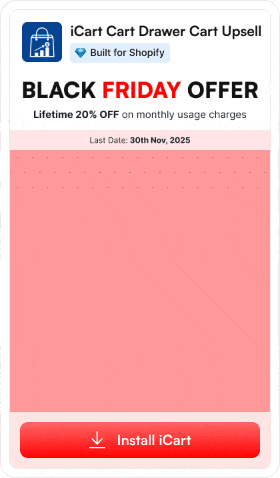
![How Bike Stores Using Shopify Are Winning [Complete 2025 Guide] How Bike Stores Using Shopify Are Winning [Complete 2025 Guide]](/wp-content/uploads/2025/11/17-11-Mon-Blog-Complete-Guide-to-Selling-Bikes-on-Shopify.webp)
![The 20 Best Shopify Beauty Store Examples [Latest Update] The 20 Best Shopify Beauty Store Examples [Latest Update]](/wp-content/uploads/2025/11/14-11-Fri-Blog-The-20-Best-Shopify-Beauty-Stores.webp)
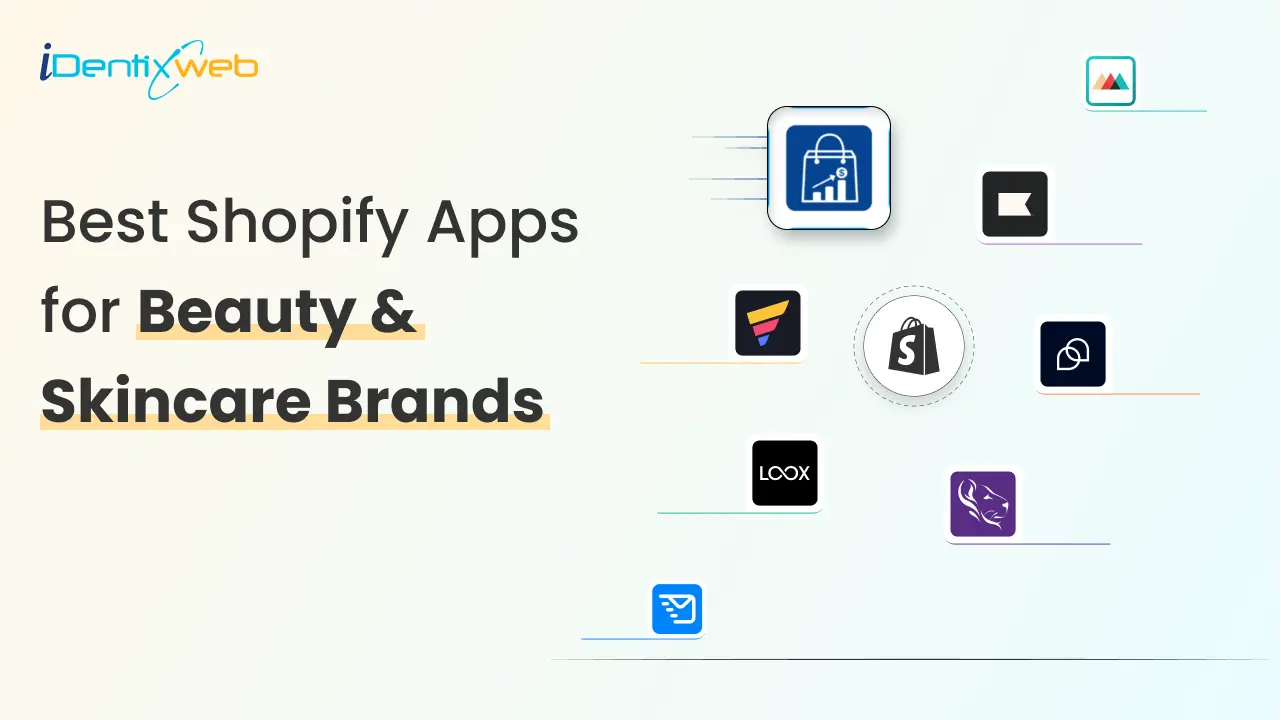
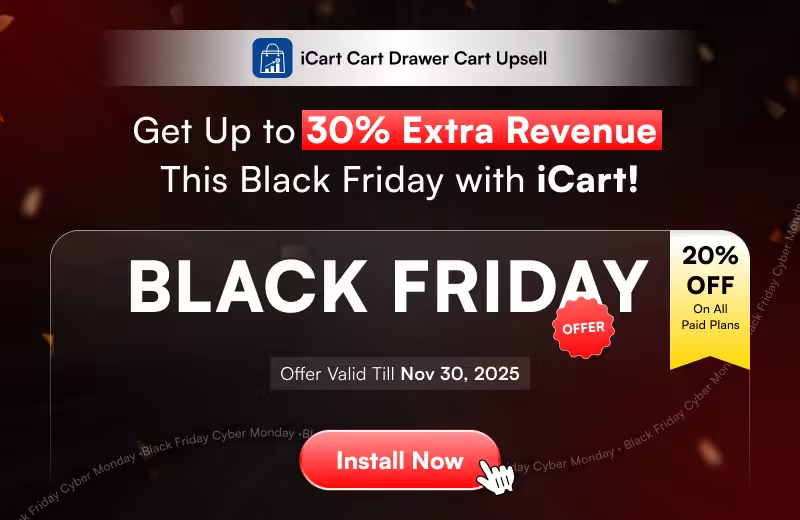
About the author
Vineet Nair
Vineet is an experienced content strategist with expertise in the ecommerce domain and a keen interest in Shopify. He aims to help Shopify merchants thrive in this competitive environment with technical solutions and thoughtfully structured content.